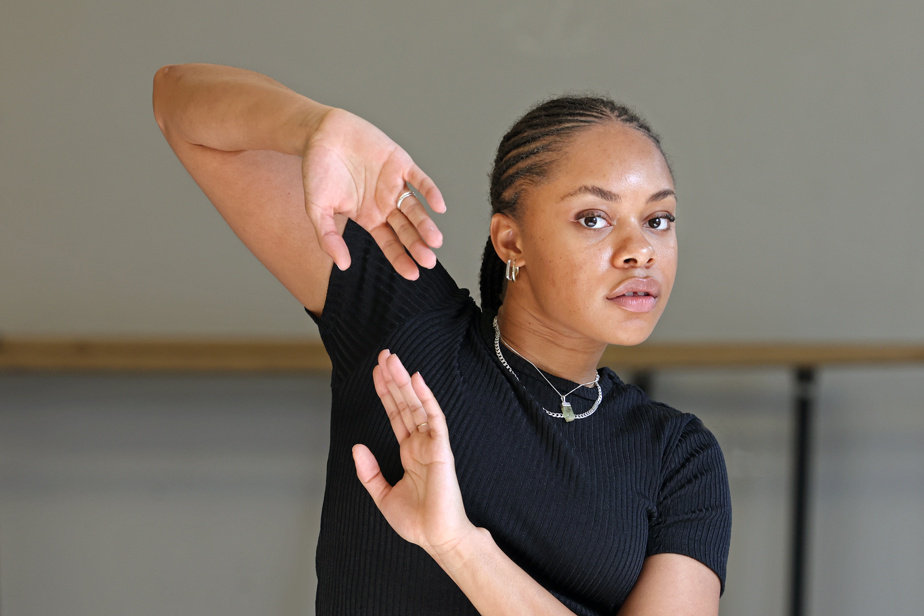With Essence, which marks 50 years of Ballets Jazz Montréal, new artistic director Alexandra Damiani wanted to bring together the past, present and future of the company. The rooms of Jacques d’Aszure Barton as well as Ten Duets on a Theme of Rescue by Crystal Pite – two key pieces in the choreographers’ repertoire, which have been revisited for the occasion – will be beautifully accompanied by a choreography of a emerging artist to watch: Ausia Jones, performer with the company since 2020.
This is the first time that it happens to me. Normally I never dance in my own work, I prefer to have an outside eye. It’s a pretty unique experience. That said, I’m still excited to dance with my colleagues and perform my own work.
I’m from Dallas, Texas. I am 25. I have always loved dancing, from a young age. My mom had a Britney Spears workout video and I played it every day after school [laughs]. I really loved it! So she signed me up for dance classes. In high school, I studied at an art school in Dallas; that’s when I really knew I wanted to do this with my life. I studied at the USC [University of Southern California] Glorya Kaufman School of Dance under the direction of Jodie Gates and William Forsythe. This is where I had the opportunity to create and where I feel like my voice developed in a clear way.
That there are so many possibilities; It’s both scary and exciting as an artist, knowing that the possibilities are endless. I was expecting someone very serious, but we also had a lot of fun. Of course, the work we were doing was serious; but there was also a lightness through it all. He of course influenced my way of creating – he was someone who questioned and pushed the boundaries of classical ballet. In class, he encouraged us to use our background in hip-hop, house… Everything is connected, it’s a question of rhythm. He really became my mentor; it pushes me to question what I do, break habits, recognize repetition, and be clear about the choices I make.
It was a strange time; I had just graduated and it was the pandemic. I received an email from Jérémy Raia [who was the interim artistic director for Ballets Jazz Montréal] offering to audition… on Zoom! It was Bruce McCormick, one of my professors at USC, who recommended me. This is how I found myself in Montreal, without really knowing what I was getting myself into! It was truly a leap into the void.
When I was 16, one of the students at the school where I was training was looking for someone to create a solo for her. I had never done this, but I really wanted to try. Everything went well and I even won a prize, which led me to other possibilities. I enjoy performing as much as choreographing, even if it’s not really common among dancers. We often feel forced to choose one or the other. This is why I am really grateful to Alexandra Damiani for giving me this opportunity.
I remember that day very vividly. She came to me during the break and told me about her idea of representing the past, present and future of the company in a show, then asked me to represent the future. I was both shocked and very honored to be alongside such incredible women and artists.
I am very inspired by music. I like to create while listening to a very eclectic playlist; jazz, hip-hop, house, ambient or classical music; I did this while working at the same time with the composer Jasper Gahunia, who wrote the soundtrack for the piece. There is this heartbeat, in the bass, which arrives, and which generates the movement, creates the intensity. For me, movement is not so much about the precise position of the body, but the feeling pulsing behind it.
The title is a question. I want to give space to the public, not dictate to them what they need to understand. It’s not a narrative piece, although there are images and themes that I play with. What I want is for the audience to feel something: it’s good, it’s bad! This is my ultimate goal!
